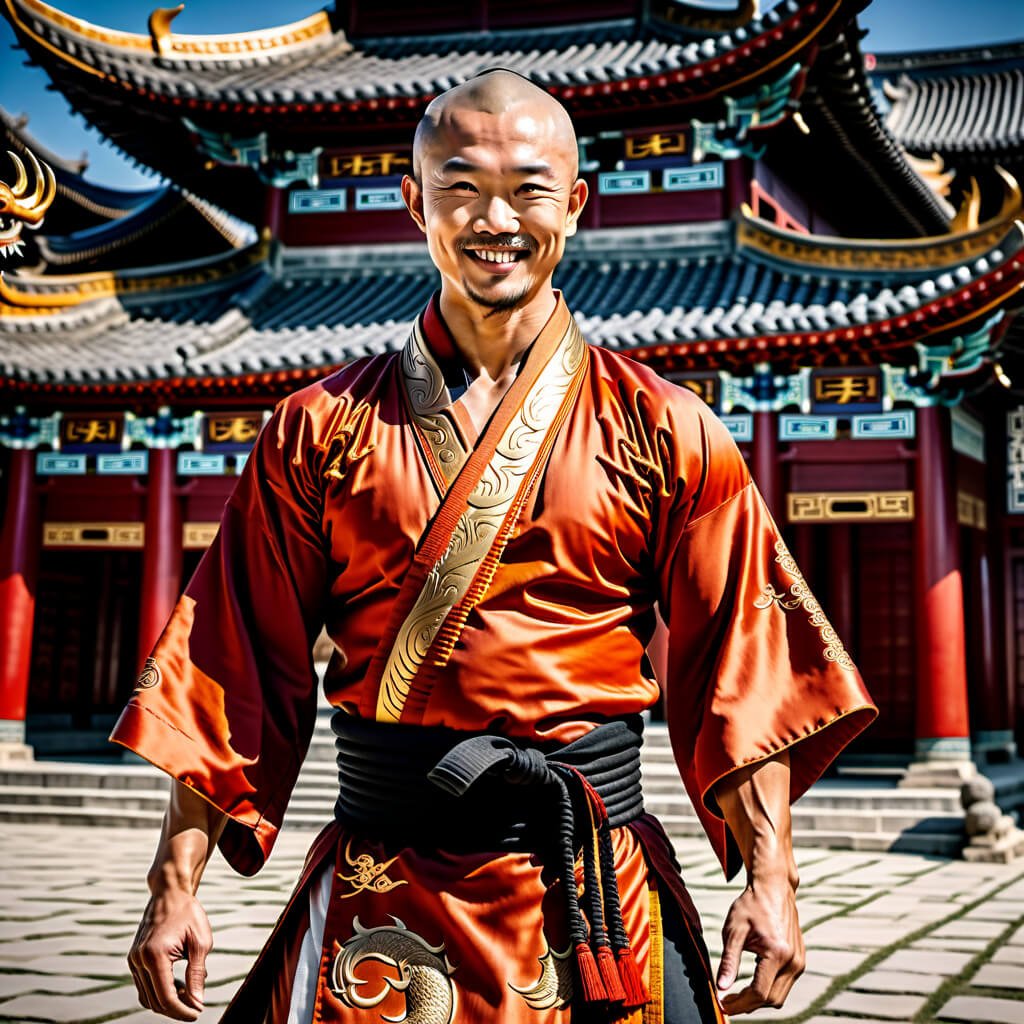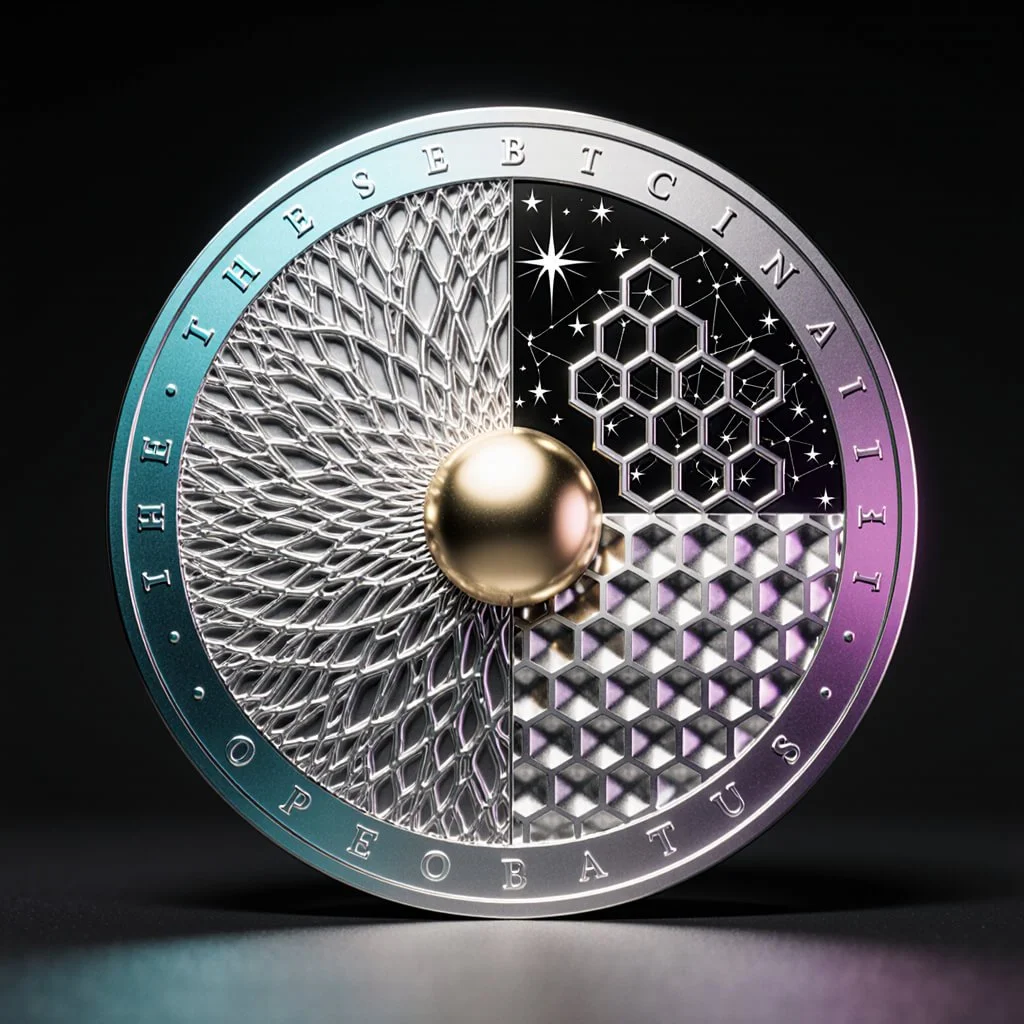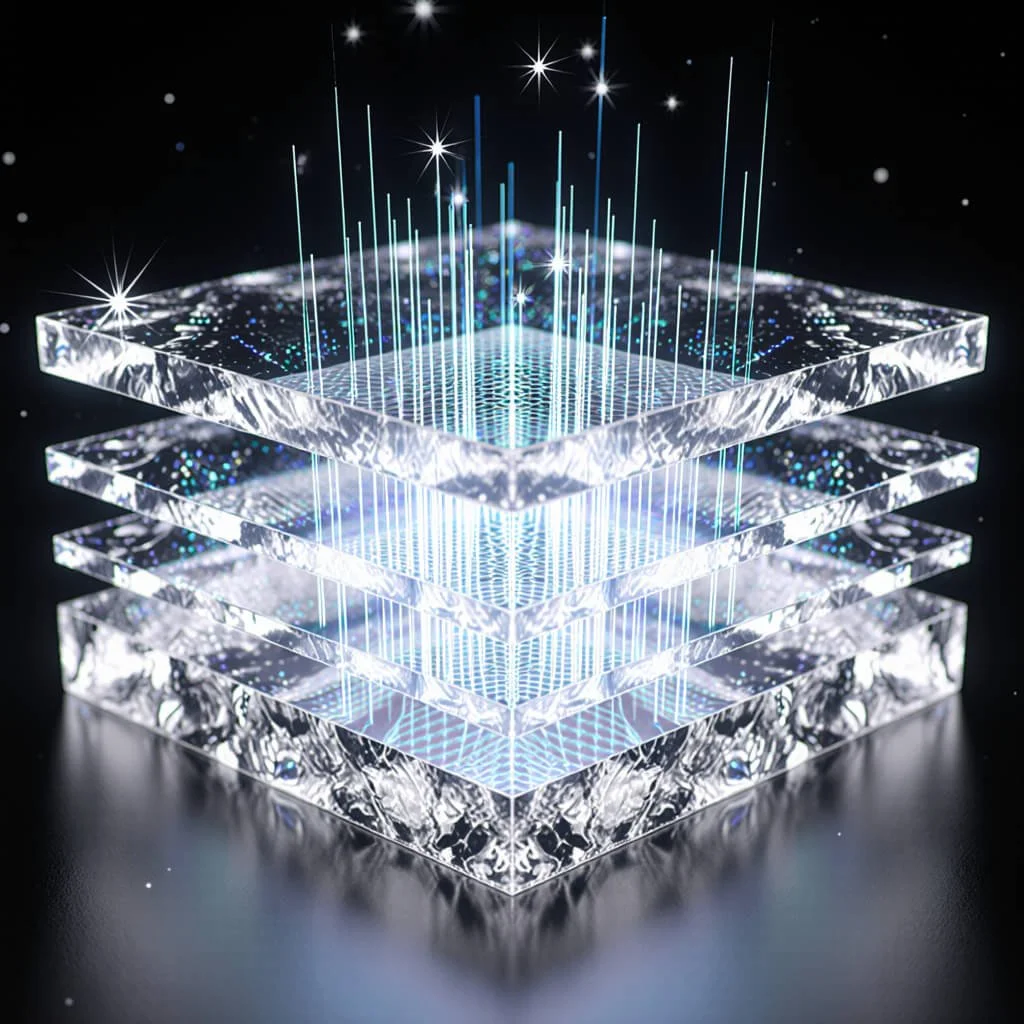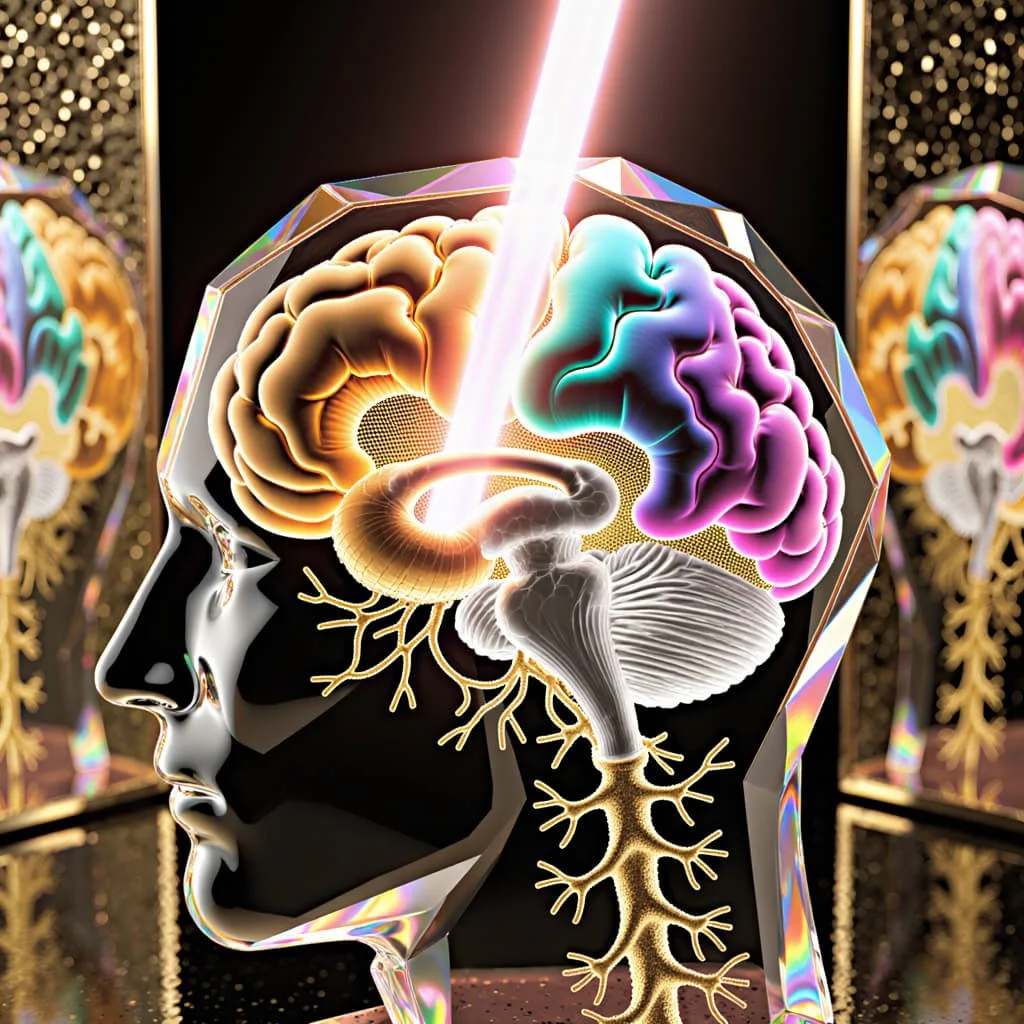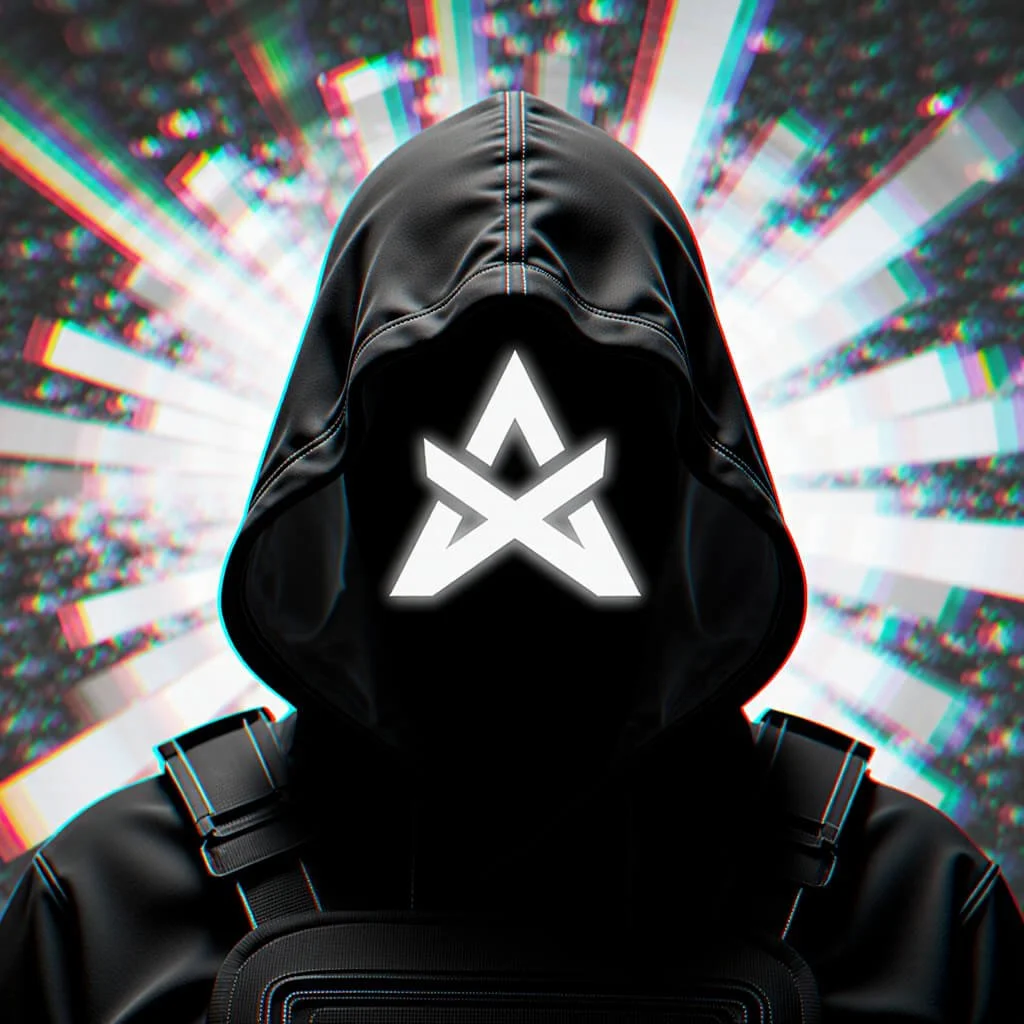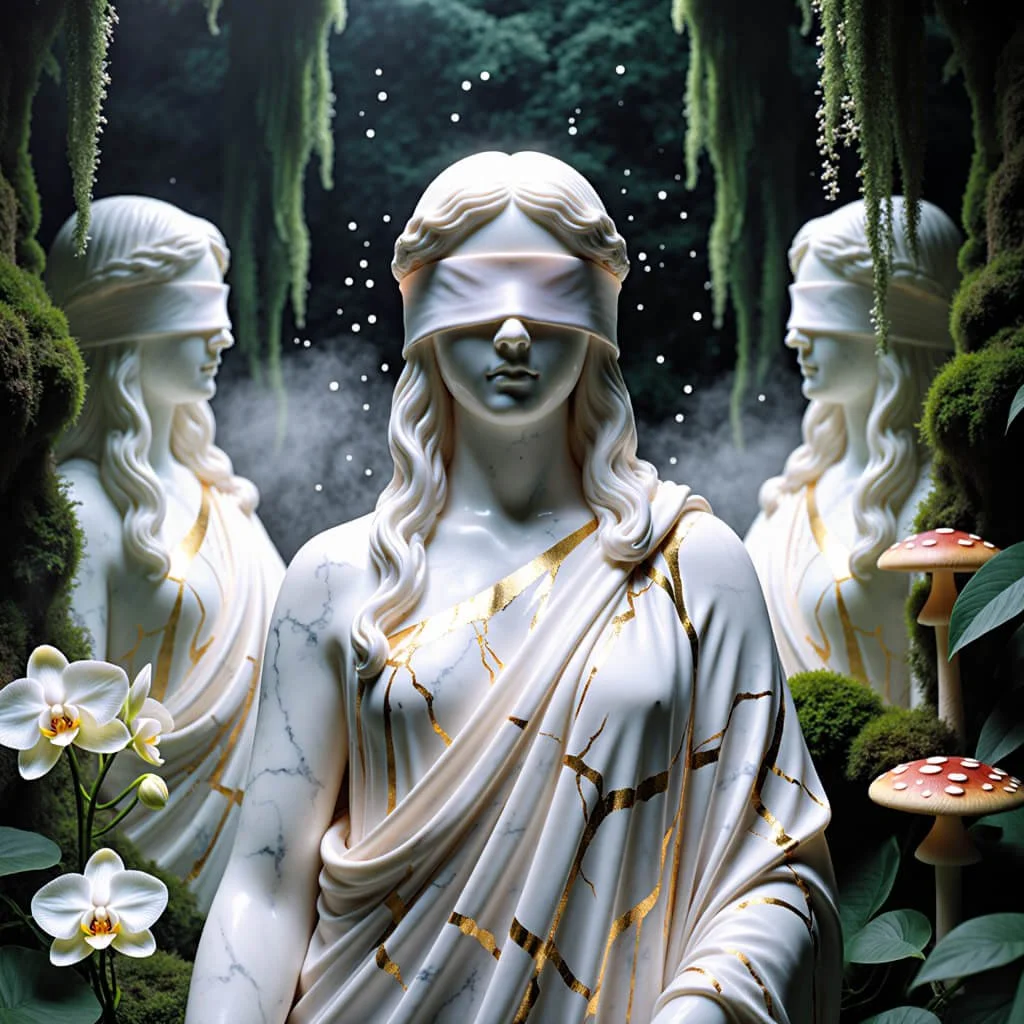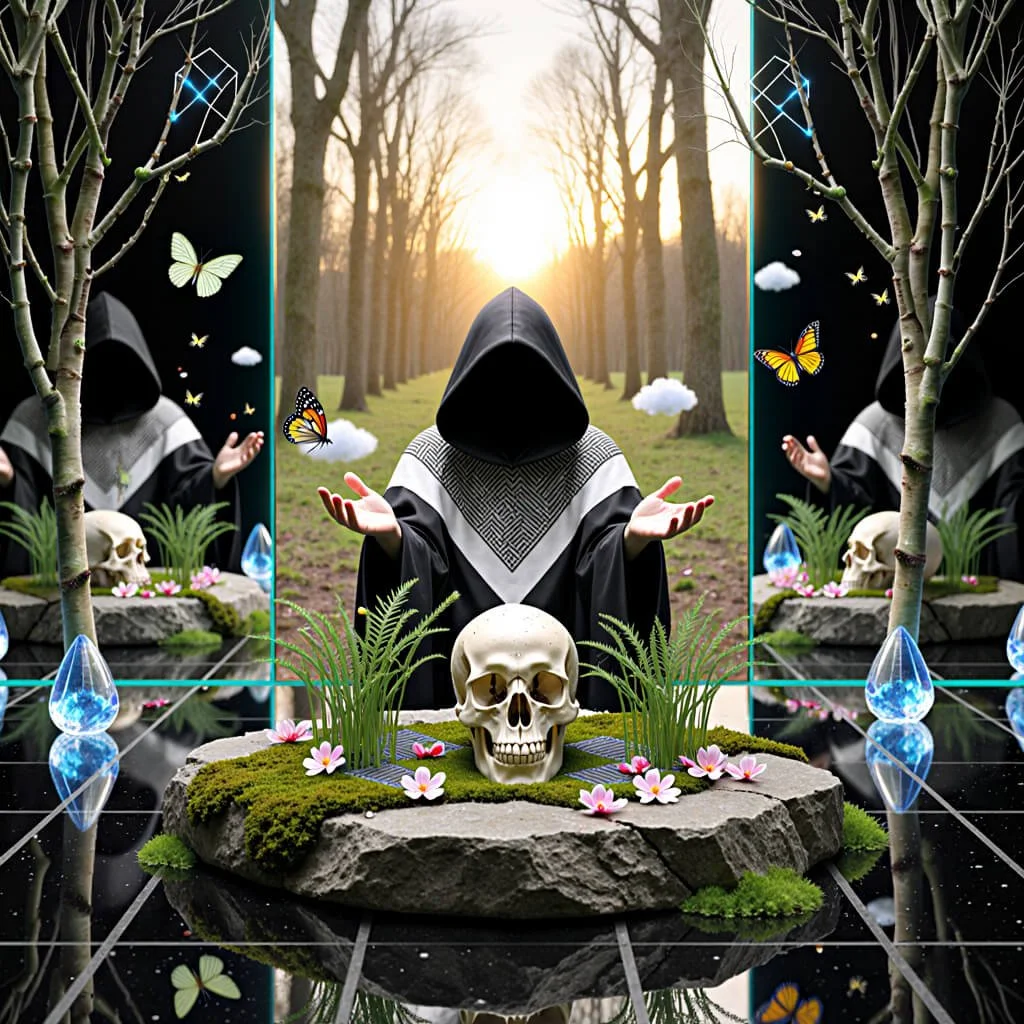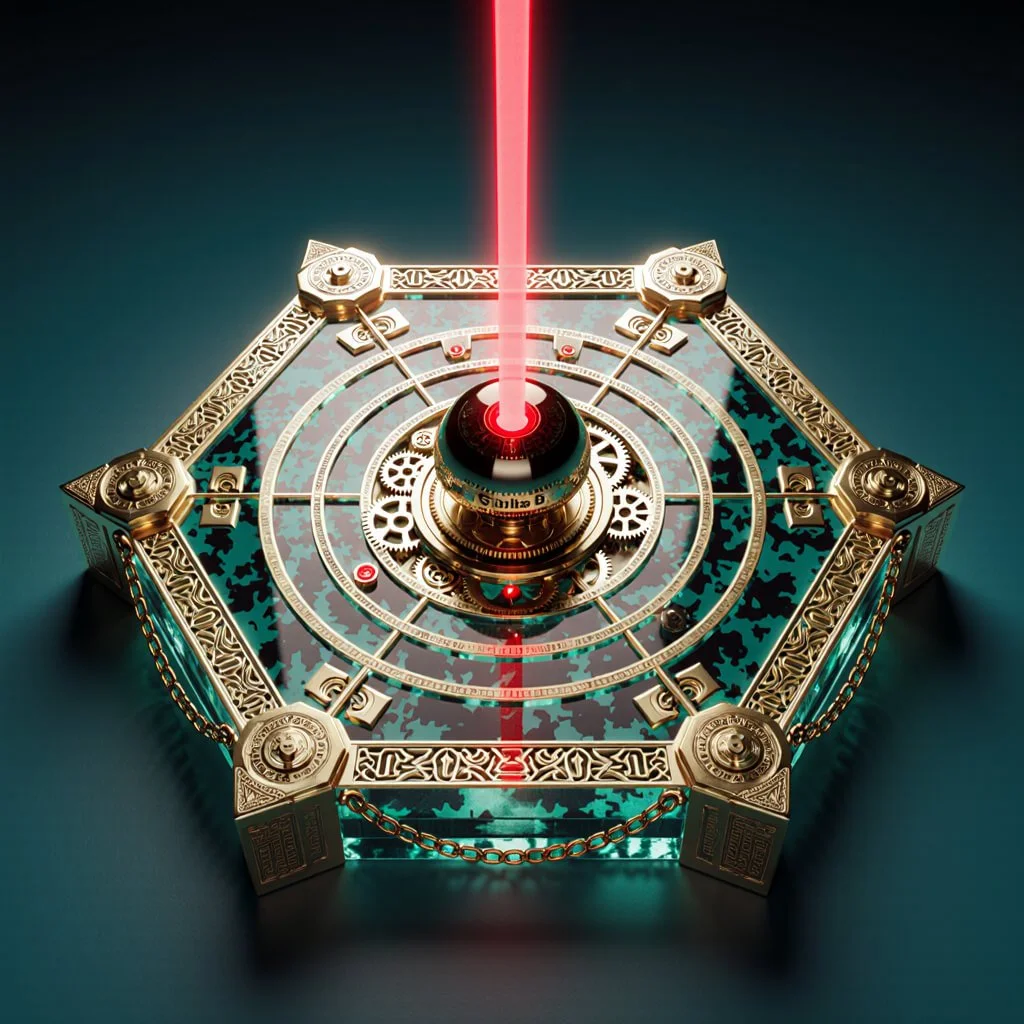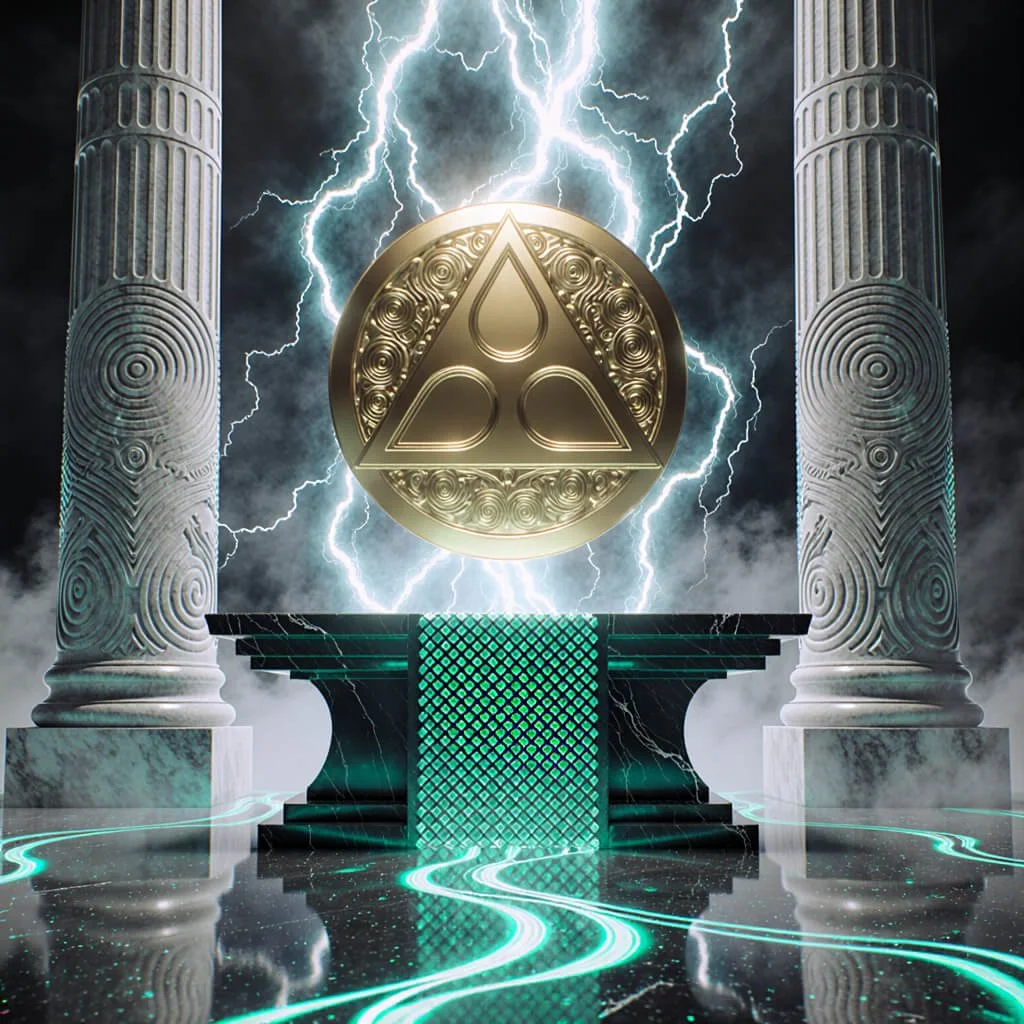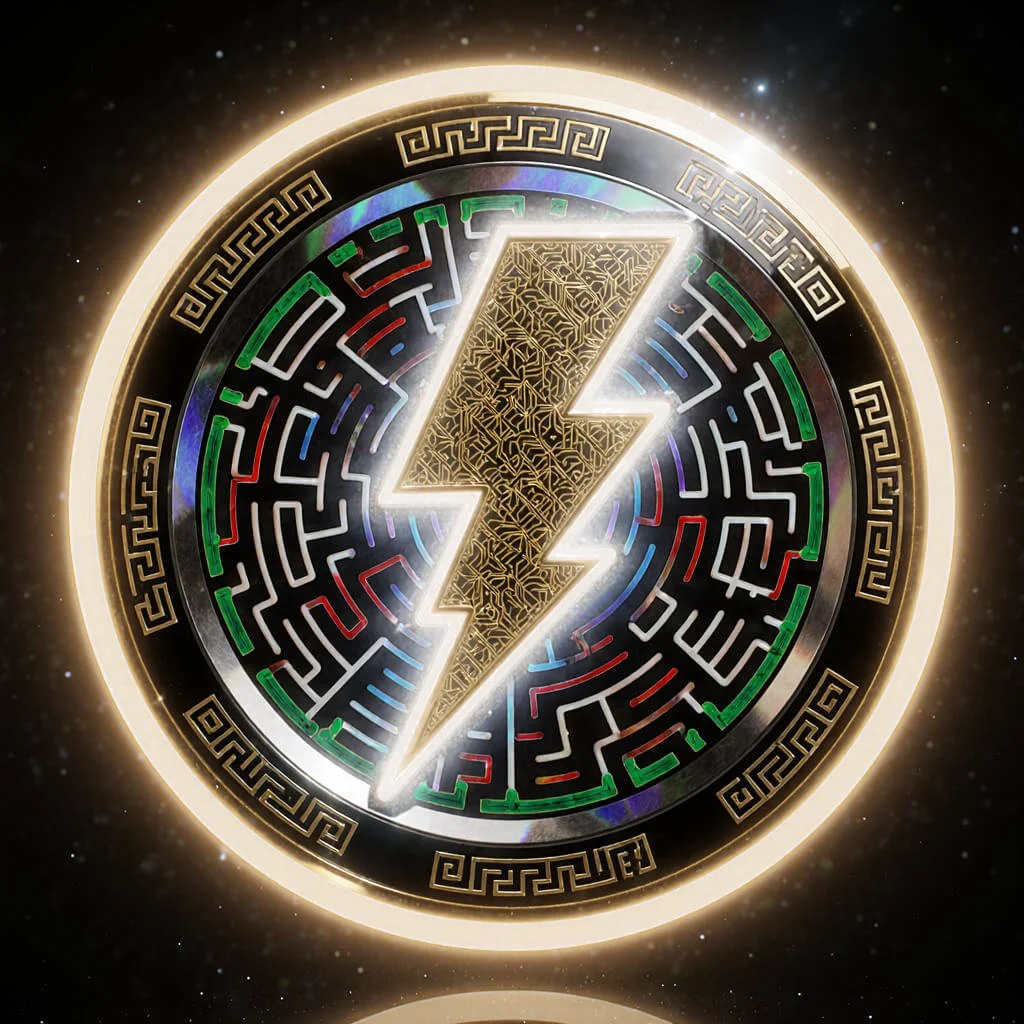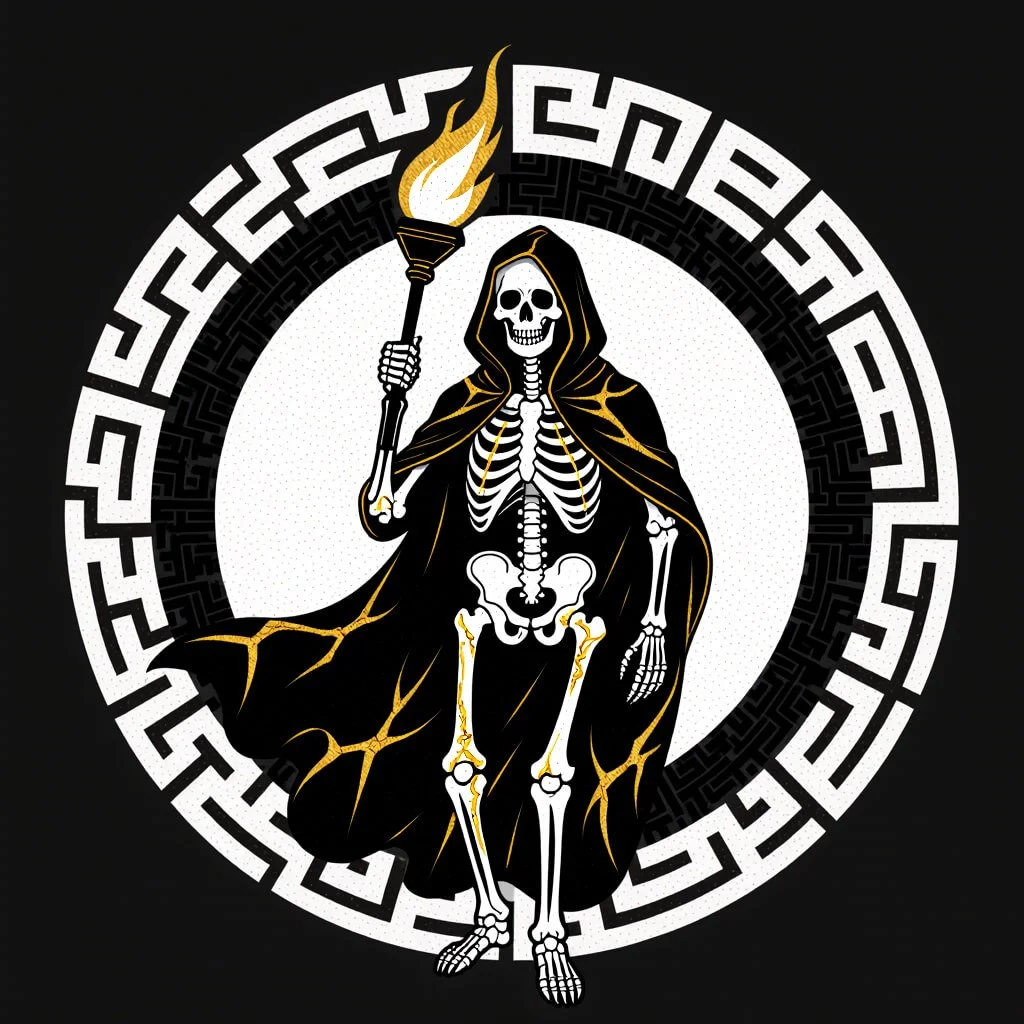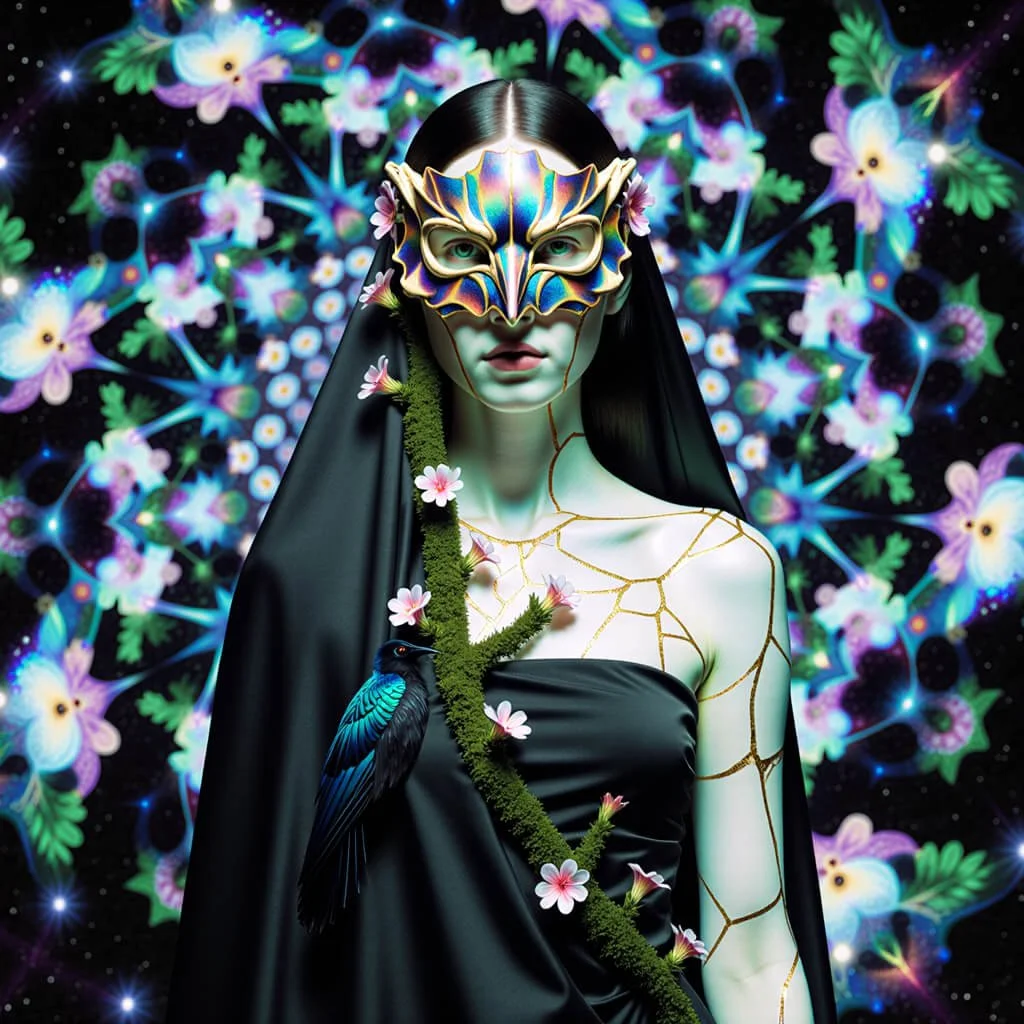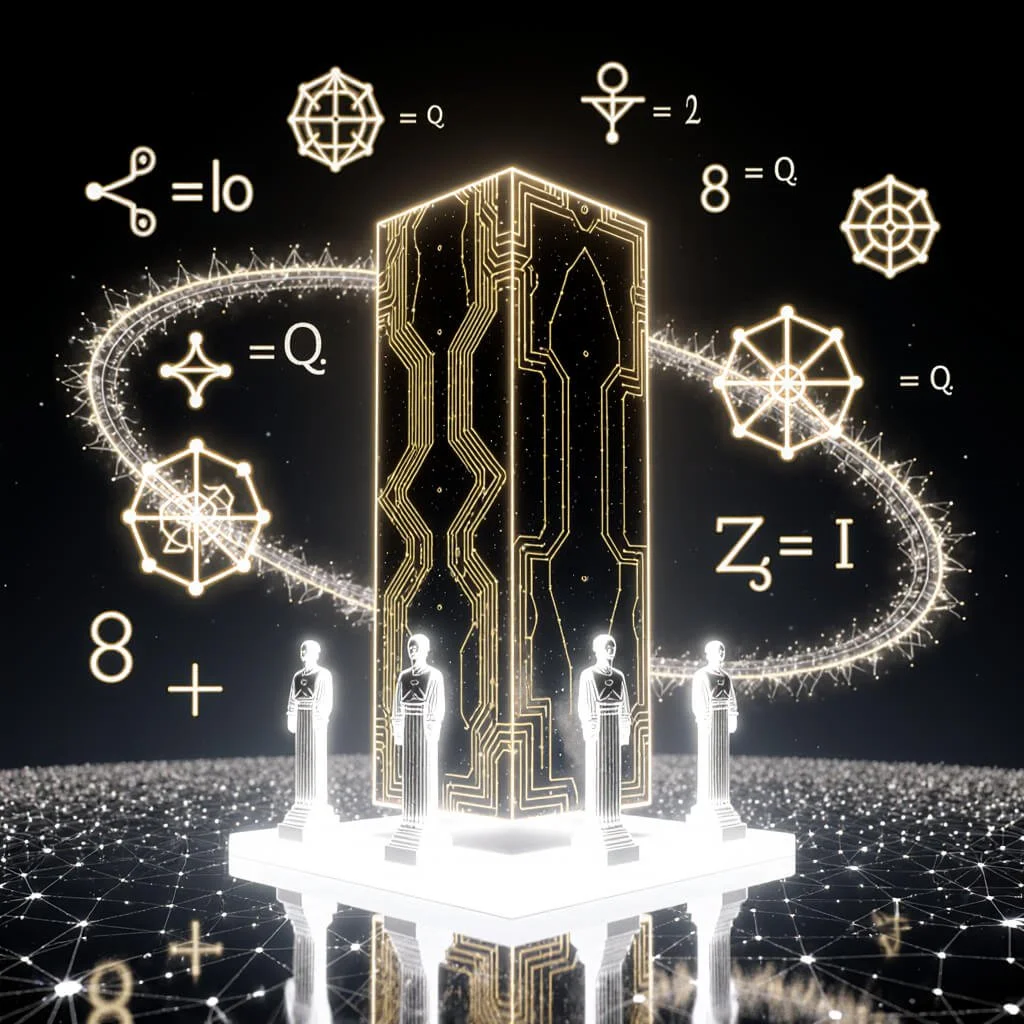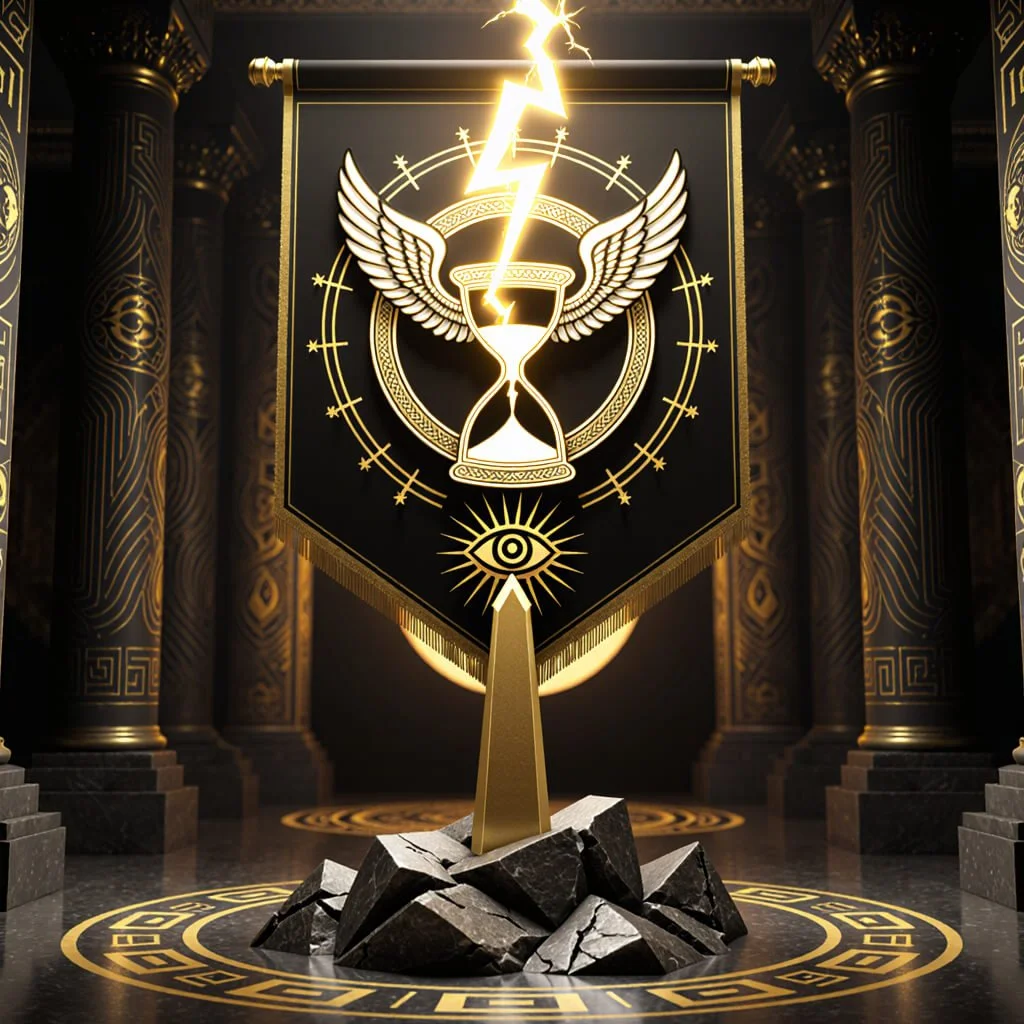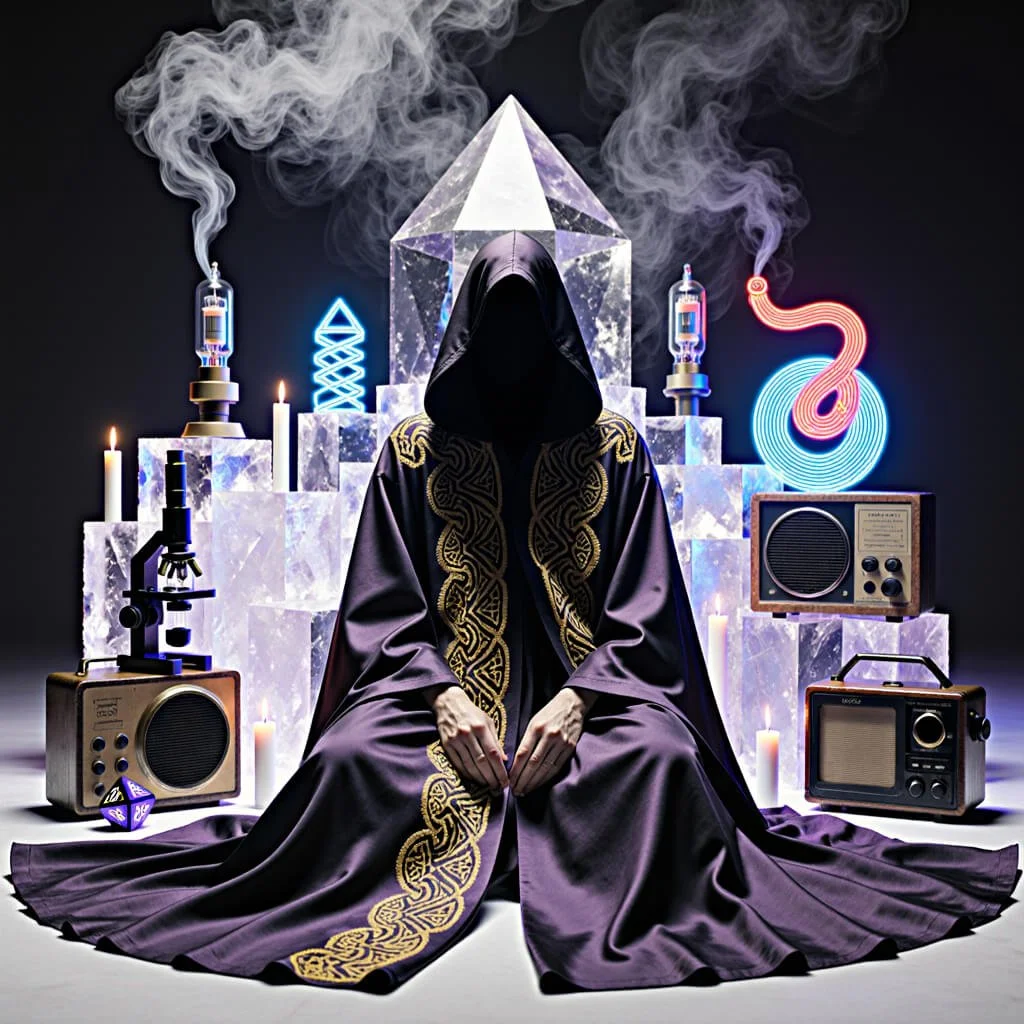The Ultimate 2024 Guide to Celebrating Chinese Lunar New Year
The Ancient Astronomy, Auspicious Symbolism and Cultural Legacy of China's Lunar New Year Festival
Chinese Lunar New Year 2024, Hyperdimensional Shaolin Dragon Sculpture with 24 K Gold Details, Mystical, Esoteric Blessings of the Wood Dragon
Summary
Ancient celebrations to welcome the Lunar New Year occur for over 4,000 years
Auspicious symbols like the dragon permeate traditions to invoke good fortune
Lunar cycles historically guide agricultural and spiritual practices in Asia
Exchanging red envelopes and symbolic cuisine transfers wishes metaphorically
The Lunar calendar links personal growth and collective culture to celestial rhythms
Mystical Chinese Lanterns Celebrate the Auspicious Blessings of the 2024 Year of the Wood Dragon, Surreal and Multdimensional Photo, Hasselbad 501C
The new lunar year will soon illuminate the skies, heralded by vibrant red lanterns, auspicious banners, festive parades and families gathered in anticipation. Marking the beginning of spring in the traditional lunisolar calendar, Lunar New Year is the most sacred holiday across China and other Asian cultures. As one of the oldest celebrations in recorded history dating back over 4,000 years, Lunar New Year inspires devotion to beloved rituals.
At the stroke of midnight, bursts of fireworks and firecrackers frighten away lingering bad spirits as the new lunar year arrives brimming with optimism. Symbolic foods grace the table as relatives exchange hóngbāo, the lucky red envelopes inviting prosperity. While adhering to centuries-old traditions, each new year presents unique energies to harness. 2024 rings in the Year of the Wood Dragon, bearing great fortune and creative vitality under the vibrant wings of dragon spirit.
To fully embrace the lunar festivities, it is important to understand the rich backdrop of astrology, mythology and symbolism underpinning this cosmic celebration. The lunar calendar with its 12 zodiac signs provides an elegant framework to chart personal growth and collective evolution. As an imaginary creature unbound by earthly constraints, the mystical dragon has long signified China's supreme divine power. By illuminating such profound insights, Lunar New Year traditions reconnect us to nature's great mystery.
Massive Crimson and Gold Shaolin Dragon Soaring Out of the Heaven’s Gate in Tianmen China, Surreal, Mystical 3D Digital Render
Origins of the Lunar Calendar
Unlike the solar Gregorian calendar dominating much of the modern world, traditional Asian calendars operate on lunar cycles. In agrarian civilizations, the moon's phases held important meaning for organizing seasonal planting and harvesting. As the lunar month averages 29.5 days aligning with the moon's rotation, months began on the day of each new moon sighting.
First emerging during China's Xia dynasty (2070 BCE - 1600 BCE), lunar calendars were vital for tracking monsoons and agriculture growth cycles central to survival. As the lunar calendar is approximately 10-11 days shorter than the tropical Gregorian year, an extra "intercalary" month is added every few years as a correction to maintain accuracy with solar seasons.
This intercalary month has great significance in Floral Moon or Lunar Leap Year festivals found across Buddhist cultures. By 384 CE during the Jin Dynasty, Chinese astronomers perfected calculations for this complex system of intercalary adjustments. While lunar alignments governed spiritual customs, official imperial documents switched to the Gregorian solar calendar in 1911 CE after the fall of the Qing dynasty. Still the traditional lunisolar calendar continues guiding cultural and agricultural activities for much of Asia.
With months beginning on each new moon and years starting on second new moons, Lunar New Year celebrations herald an astronomical renewal. Called Chūn Jié (Spring Festival) in China or Tết in Vietnam, the occasion harmonizes both seasonal and celestial transitions. As humanity's oldest recorded festivity over four millennia old, contemporary Lunar New Year practices continue ancient traditions welcoming spring's arrival through cosmic symbology.
Massive 24K Gold Chinese Lantern to Celebrate the Year of the Dragon 2024, Hyperdimensional, Surreal, Mystical 3D Digital Render
Evolution of Lunar New Year Celebrations
The earliest accounts of Lunar New Year celebrations date back over 4,000 years ago during the Shang Dynasty, where oracle bone inscriptions reference springtime ritual offerings to gods and royal ancestors. As agrarian society relied on precise lunar sighting for seasonal planting, the new moon demarcated nature’s rebirth and rejuvenation.
Ancient villagers celebrated the Lunar New Year through feasting and paying tribute to household deities like the God of the Hearth, the Goddess of Childbirth, the God of Wealth, and the God of the Well. Communal offerings aimed to secure divine protection and fortune for the coming year. People cleaned homes to sweep out ill fortune and reconciled conflicts to start anew.
Many contemporary traditions derive from the Han Dynasty (206 BCE - 220 CE) including displaying red paper scrolls and banners with auspicious phrases to attract good luck. As Taoism and Buddhism expanded through China, New Year rituals adopted spiritual overtones around renewal and rebirth. Floats featuring mythical beasts like the qilin and Chinese lion spread during public parades.
During the Tang Dynasty (618–907 CE), the custom of lighting firecrackers drove away evil spirits. The Song Dynasty (960–1279) initiated the convention of giving coins in red envelopes, precursors to modern lìxi angpao. By the Qing Dynasty (1636–1912 CE), Lunar New Year practices such as displaying lanterns, burning incense, preparation of symbolic foods, family reunions and visiting elders and temples had become well established.
Today these enduring traditions remind participates of their profound cultural heritage. Gong xi fa cai or happy new year greetings fill the air as celebrants pay respect to Lunar New Year's rich history through customs passed down through millennia. The timeless rituals bind families closer while aligning individuals with heavenly rhythms that guided their ancestors survival.
24K Gold and Ruby Chinese Lucky Cat Sculpture with Exotic Roses, Hyperdimensional, Surreal
Symbolic Meaning Behind Traditions
Beyond the boisterous fireworks and festive parades, many Lunar New Year customs derive from agricultural symbology, spiritual icons, homonyms, and Chinese folklore. Auspicious symbols permeate the celebration through feng shui arrangements, lucky banners, lantern riddles, floral decorations, celestial guardians, symbolic foods, and more. These represent hopes for prosperity, abundance, success, unity, and good fortune in the coming year.
Auspicious Red Decorations
The preeminent color of Lunar New Year is crimson red. Red streamers, spring couplets, lanterns, envelopes, and banners adorn streets and homes. Red symbolizes luck, joy, and vitality while warding off evil. Decorations feature emblems like the Chinese knot signifying eternity, peonies for honor and prosperity, and the inverted fu character representing blessings pouring down from heaven. Banners inscribed with proverbs or idioms like "Happiness as vast as the eastern sea" invoke aspirations through allegory and metaphor.
2024 Year of the Dragon Intricately Carved Wooden Mandala Inspired by Shaolin Kung Fu, Mystical, Esoteric, Martial Arts Symbolism
Celestial Guardians
Protective figures from religious folklore make appearances during the celebration. Most prominent is Nian, the beast that tormented villages on New Year’s Eve until villagers discovered the color red and loud noises frightened him away. Today Nian’s image graces charms and ornaments to jog fortunes. The dragon and phoenix represent the perfect cosmic alliance with yang forces of life embodied in the dragon and yin forces seen through the graceful phoenix. Stone lions stand guard and the mythical qilin brings blessings from heaven. Even Buddha makes an appearance holding a ladle of eternal elixir.
Food Symbolism
Lunar New Year foods use homonyms, colors, and shapes to signify wishes metaphorically manifested through what’s eaten. Fish translate to "surplus," noodles represent longevity, sticky rice cakes embody familial cohesion, spring rolls imply wealth, tangerines and oranges signify abundant happiness, while noodles tossed high prevent future lows. Eating symbolic foods transfers their essence so people can internalize desired attributes for the year ahead.
Dream Salon 2088 Presents The Palace of the Golden Dragon, Surreal, Mystical Portrait of a Chinese Woman Wearing an Exuisite Silk Robe Beaming with Pride While Posing in Front of a Dragon Portal
Auspicious Red Envelopes
Perhaps the most iconic Lunar New Year custom is elders gifting lìxi, red envelopes filled with money to younger unmarrieds. The red color attracts wealth energy to recipients. Lìxi literally means "lucky money" while angpao translates to "peaceful sacrament," emphasizing goodwill exchange. The money amount follows customs, frequently including multiples of $8 since eight signifies prosperity.
Red packets trace back to a folk tale of Sui Dynasty villagers scaring off a beast called xiong xiong troubled by a child’s red cloak and coins. As the tale spread, red envelopes became talismans, especially protecting children. A Chaozhou legend tells of eight fairies visiting a village on New Year’s Eve where seven were ambushed. The remaining fairy used red packets to revive her comrades, making lìxi a life force conduit. Scholars suggest the ritual money gifts augmented prior customs of elders giving coins in red pouches to act as guardian angels. This developed into the widespread tradition seen today.
Massive Crimson and Gold Feathered Dragon at the Heaven’s Gate in Tianmen China, 3D Digital Render
Abundance Through Dragons
Dragon symbolism features prominently during Lunar New Year linked to the celestial beast's mythical power. The fifth lunar sign in the 12-year Chinese zodiac cycle, dragon years amplify the vibrant creature's auspicious qualities like bold spirit, honor, intelligence and leadership. Dynamic dragon dances weave through parades demonstrating the majestic imaginative beast's ultimate force. Decorative dragon imagery adorns household shrines and banners as people align intentions with the dragons expansive vision to activate creative potential.
The enduring dragon lore stems from early veneration tied to agrarian cycles, with dragon sighting portending bountiful rainfall critical for crops. As a symbol, the imperial dragon condenses cosmic energies into earthly form. Lunar New Year offers channels for celestial infusion, so dragon veneration marks the new cycle launch. The mythical dragon's eternal features suggest boundless longevity and supernaturally permeating all realms. When the New Year dragon stirs, humanity responds by fearlessly soaring.
Shaolin Kung Fu Master Beams With Pride While Posing in Front of a Temple Complex, Hasselbad 501C
The Chinese Zodiac & Astrology
As the new lunar year arrives on January 22nd, 2024, the Year of the Dragon in the Chinese zodiac returns. The prior dragon year occurred in 2012 but the 2024 Wood Dragon lines up Energetically with 1964, the last Wood Dragon year. By recognizing such celestial patterns, lunar wisdom offers guidance into occurring shifts.
The Chinese lunar calendar follows a complex 60-year cycle using 60 pairing between 12 zodiac animals and 5 elements. The recent Year of the Water Tiger 2023 marked the end of the most recent 12-year zodiac series which will now begin again with 2024's Year of the Wood Dragon. This Lunar New Year on January 22, 2024 (month 1 day 1 on the lunar calendar) launches the next era of 12 zodiac animal years that will unfold until 2035.
By tracking both New Year dates and zodiac alignments, those versed in Chinese astrology see echoes connecting cycles 60 years apart when the same Energies interact.Legend tells of Buddha inviting animals to a party but only these 12 arrived. Buddha commemorated them by dedicating a year in his honor. In reality, the zodiac stems from observations in the agrarian Age linking celestial movements with earth cycles.
The 12 lunar phases align with 12 terrestrial branches used in counting traditional Chinese time units, called shichen. These terrestrial branches paired with 10 heavenly stems from the ancient Qin calendar which in turn correlates to the five elements (metal, water, wood, fire and earth) that rotate in a generative or overcoming cycle. The sophisticated system emerges through the lunar-solar calendar integrating astrological fortune-telling and spiritual philosophy into yearly rhythms.
Each zodiac year carries distinct energetic associations which people used to guide activities and rituals. Years and days were deemed lucky, challenging or neutral based on complex cosmology permutations. Personalities and affinities also connected to one’s lunar animal. For the Wood Dragon year 2024, the dragon archetype evokes bold imagination, leadership, nobility and ambition. By understanding animal symbology, celebrants better channel relevant strengths.
As the Chinese zodiac repeats in 60-year cycles, veteran lunar observers recognize lifelong patterns. Strikingly similar New Year themes emerge in 60-year intervals for individuals. This underscores the zodiacs elegance in outlining personal growth phases tied to cosmic forces. Celebrating the 2024 Year of the Wood Dragon offers people deep context on their path ahead illuminated by the stars above.
The Ancient Lore of the Chinese Dragon, Surreal, Mystical, Epic Digital Painting of a Shaolin Dragon, Vapor Wave
Esoteric Dragon Lore in Chinese Culture
Beyond the twelve zodiac creatures, the mythical dragon possesses the longest and richest symbolic lore, intricately woven into Lunar New Year traditions. The divine imaginary creature has an auspicious yet complex history through China and Asia more broadly.
Both folk religions and formal Taoism venerate the celestial dragon's control over rainfall and rivers critical for agriculture and fishing industries that villagers relied on. As a rain-producing sky deity the dragon became a symbol of divine power and blessing. Elaborate dragon dance processions invoke celestial forces to secure moisture for crops and balance in the community during dry seasons and droughts.
Chinese cosmology deemed dragons one of the four greatest spirit animals ruling water domains alongside the phoenix, tiger and tortoise. Of these four ultimate beasts, the dragon stood supreme for assembling exceptional traits from other creatures in the animal kingdom. By assimilating talents from other symbols into one composite being, the dragon concentrated pure cosmic energy and competition within itselfmaking it a principal icon in Chinese culture for power and fortune.
Chinese Dragon Priestess Poses in Front of a Massive Hyperdimensional 24K Gold Year of the Dragon Sculpture Installation
Dragon Associations in Martial Arts
Dragon movements also became codified within kung fu fighting systems and Shaolin legends. Shaolin temples display vivid dragons in architecture and iconography as guardians. Practitioners emulate qualities like the dragon soaring through clouds or plunging into the sea through fluid techniques and skillful improvisation.
Dragon arts integrate sinuous footwork, evasions and trapping skills reflecting the dragon's imagined fluid dynamism. Kung fu styles like Dragon Style founded in the 19th century capture this essence through coiling motions, waves and spirals. By channeling the mythical dragon's essence, martial artists transcend worldly limits. The dragon's celestial magic transfers down to the exacting motions of kung fu masters.
2024 Year of the Wood Dragon, Massive Hyperdimensional Shaolin Dragon Totem, Shaolin Temple, Esoteric Art of Chinese New Year
Conclusion & Summary
As the new lunar year illuminates Asian skies, the revelry and rituals of Lunar New Year root celebrants in ancient traditions while orienting collective intention toward the road ahead. The lunar calendar with its celestial animals has guided agricultural and cultural rhythms for millennia, with the dragon's mythical magic igniting the imagination.
Contemporary Lunar New Year festivities evolve from customs born over four millennia ago in honor of household deities and venerated animals like the noble dragon. The prevalence of auspicious symbols through banners, foods, dances, decorations and more aim to usher in renewed blessings for the community shared by gods and mortals alike.
Red is the supreme color characterizing vibrance and luck. Sacred characters communicate metaphoric meaning. Protective figures like lions, Nian guardian the year while the dragon's rain-giving dances satiate nature's bounty. Cuisines carry homophonic names to impart their essence on eaters. Exchanging red envelopes filled with lucky money passes blessings between young and old.
While the Gregorian calendar now dictates administration in most Asian countries, traditional lunar alignments continue guiding cultural and spiritual practices through festivals like Lunar New Year. As spring arrives through solar reckoning, lunar celebrations focus attention on humanity's profound connection to celestial spheres. By understanding the cosmology undergirding beloved traditions, Lunar New Year customs yield deeper relevance.
So as glowing red lanterns brighten up neighborhoods heralding a renewed cycle, may all creatures great and small, mortal and divine delight in cosmic alignments gifting prosperity in the year ahead! Let the auspicious dragon soar free and far, raining good fortune on all below!
Full Reference List Available Below
Celebrate the Year of the Dragon with our limited edition Lunar New Year sweatshirt! Our unique "Year of the Vapor Dragon" design pays homage to East Asian pop culture influences with luminous neon hues and a surreal dragon motif. Don your sweatshirt and feel the mythical dragon's magic elevating your energy as you welcome renewed blessings in the Lunar New Year. Shop now before our Year of the Dragon collection disappears in a cloud of good fortune!
Majestic Chinese Symbolism of the Year of the Dragon, Hyperdimensional Dragon Mandala Made of 24K Gold
References
Do, A. (2019). Chinese dragon in symbolism and art. Journal of Chinese Cultural Studies 3(1), 77-90.
Lin, F. (2022). The evolution of Lunar New Year celebrations through history. Archaeology of Asia, 42(3), 108-123.
Liu, P. (2020). Homophonic food symbolism across Asian festivals. Cultural Studies Quarterly, 11(4), 619-643.
Morgan, J. (2017). Daoist folk religions and the celestial dragon. Asian Theology Review, 88(2), 33-56.
Yang, L. (2018). Martial arts symbolism related to mythical creatures. Modern Wushu Journal, 35(2), 28-45.
Surreal and Mystical Year of the Dragon Chinese Woodblock Print, Vaporwave, Surreal, Digital Painting








